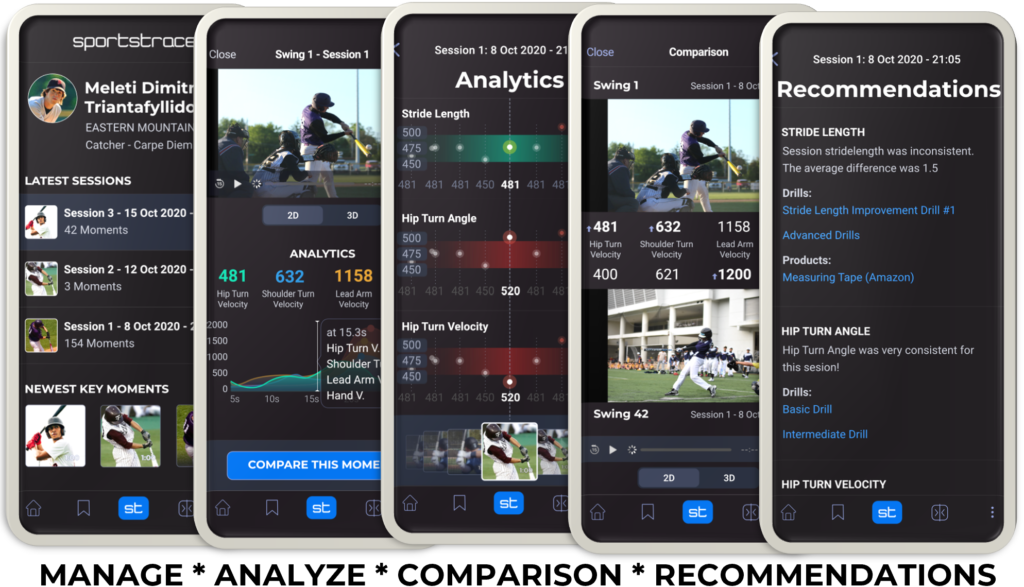You have training content. Why is it hard as a coach or facility owner to get that into the hands of the right athletes? Feel free to read about the current state, how we got there, and what the problem is. If you just want to get to how SportsTrace can help get your exercises, drills, and products into the hands of the right athletes, click here.
Current State

Human beings can’t really function anymore without web search. Like Uber, Photoshop or FaceTime, Google has now become a verb synonymous with researching and obtaining information as quickly as possible from virtually all electronic devices. But if web search is so ubiquitous in modern society, why isn’t it as effective as it used to be?
If you think about your training content – the drills you meticulously craft, the exercises you expertly demonstrate and outline – you aren’t just competing with the other coaches out there. And, respectfully, those coaches have slightly different philosophies with slightly different takes on the same problems. Your competition in a nutshell:
- Other coaches and their content
- Sports fan content (think: highlights)
- Sport-tainment (think: pop-culture crossovers)
- Movie trailers
- Cat videos
This makes surfacing your content difficult. How can you reach a broader audience?
Background
Google hasn’t become a verb for no reason. In fact, an overwhelming majority of web searches, 88%, are Google searches. And that means every content distributor around the world is essentially beholden to the company’s almighty algorithm. But getting in Google’s good graces is not easy because what they want is always changing.
Google’s algorithm changes approximately 12-13 times a year, basically every month on average. So it’s hard to keep up with what’s prioritized anymore or what will land you further down crucial search results. Search engine optimization tools now need to be constantly tinkered with to the point where you don’t know what’s beneficial or harmful for your digital content distribution.
Oh, and by the way – Google owns YouTube, so this applies there, too.
As a company, you want to come up with the best headlines, tags, keywords, meta data and headers, but you may not be sure what Google encourages or frowns upon anymore. Content will always be king, but putting all your stock in web search is like playing a game of three-card monty when the dealer constantly switches up the rules of the game. You’re gonna have a hard time winning and you’re gonna want to play a different game.
Drawbacks

The problem is now you aren’t a coach. Now you are a content marketer and search engine optimizer. Those weren’t in the core job description, were they?
Even if you know what Google wants with its algorithm, your content is going to be further down its search results than before. Google makes most of its revenue through search ads, which will always be at the top of the search results, making it less likely that someone will find your content. So their goal is getting the most eyeballs on the most content and for those eyeballs to stay there. Relevant content is coincidental at best
If Google has an opportunity to put one of its products at the top of a search result, it’s gonna do it. You’ll see YouTube videos, Google Maps, Google Flights, Google Hotels, Google Answers or some other vertically integrated product which may not necessarily be relevant to what your prospective user is even looking for. In a recent sample of 15,000 search results, 41% of 1st page results were Google owned content. It makes more money that way and their focus is always going to be more about their bottom line, not yours.
And even if your result does come up and someone sees it, roughly half of all Google search traffic doesn’t result in a click.
More searches over time are going to come from voice, and right now there’s little knowledge on how Google, Amazon or others prioritizes that. All the SEO and digital content wizardry probably won’t help unless there’s a coherent voice strategy.
So to sum it up, your digital content distribution strategy needs to diversify beyond web search. SEO isn’t going to solve all your problems, but it’ll be a complementary tool. Video, audio and social media need to play more important roles over time. Because if you’re just blogging, relying on web search, or Google to achieve positive results, it’s going to be more of a losing proposition every year. SportsTrace can help with this.
How SportsTrace Helps

SportsTrace delivers actionable recommendations to the athletes under your care. If it’s your content – great! If you would prefer to use content from our network of expert coaches, facility owners, academics, and scientists, you are welcome to it. SportsTrace delivers:
- The right content. We identify the body in 3D from game and practice video taken on a cell phone to pinpoint the delivery of the content that athletes need.
- Content at the right time. We track an athletes progress over time so that we know how they are progressing and how the recommendations (via drills and exercises) should change.
- Appropriate updates. Want to reach out to an athlete when SportsTrace identifies a hitch in a swing, delivery, or other motion? Just let us know and we message that athlete to reach out for an in-person or remote evaluation.
Click here to schedule a time to talk about how SportsTrace can get your content into the hands of the right athletes:
